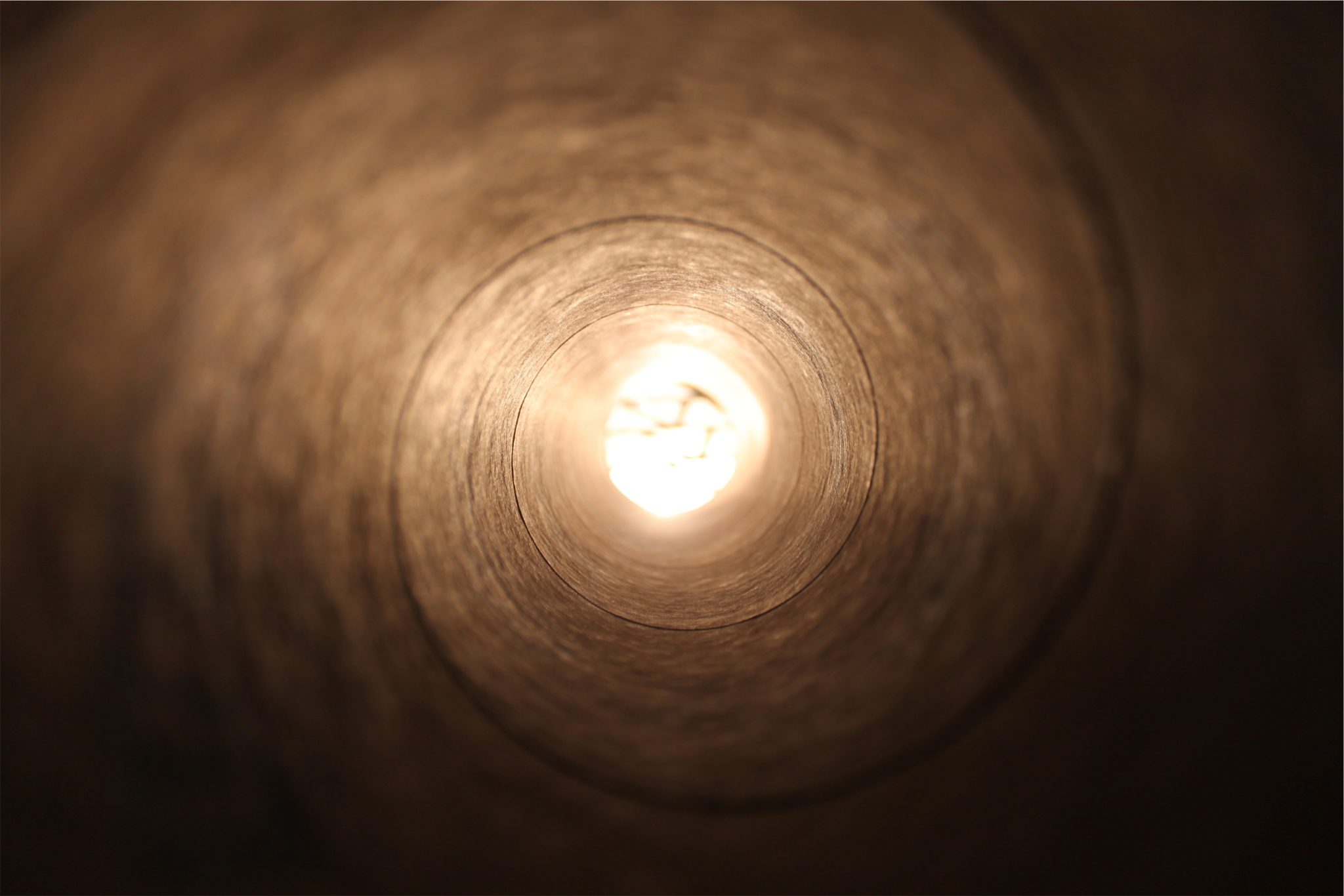The 24th of Tevet (this year, January 12) is the anniversary of the passing of Rabbi Schneur Zalman of Liadi, the founder of Chabad Chassidism.
Rabbi Schneur Zalman was born in the White Russian town of Liozna on Elul 18, 5505 (1745)—the 47th birthday of the founder of the Chassidic movement, Rabbi Israel Baal Shem Tov. In 1764 he traveled to Mezeritch to study under the tutelage of the Baal Shem Tov’s successor, Rabbi DovBer, the Maggid of Mezeritch; despite his youth, he was accepted into the inner circle of the great master’s pupils. Upon his return from Mezeritch, there gathered about him a group of disciples whom he instructed in the ways of Chassidism. It was during these years that he formulated his distinct “Chabad” philosophy and approach to life, which he subsequently outlined in his magnum opus, Tanya, on which he labored for twenty years before publishing it in 1796. By that time, his influence had spread throughout White Russia and Lithuania, where a significant part of the Jewish population regarded him as their “Rebbe” and leader. In the winter of 1812, while fleeing Napoleon’s armies, he arrived in the town of Pyena;[1] there he fell ill, and on Motzaei Shabbat (Saturday night), Tevet 24, at 10:30 in the evening, he returned his soul to its Maker.
In those last days in Pyena Rabbi Schneur Zalman wrote one of the most profound essays to issue from his pen—a lengthy treatise later published as Section 20 of Iggeret HaKodesh (a collection of his letters and essays appended to the Tanya as “Part Four”). Another manuscript that has been preserved from those days is a short discourse entitled “The Humble Soul,”[2] which the Rebbe wrote shortly before his passing (by one account, “after havdallah, several minutes before giving up his soul in purity to G-d”[3]).
The contents of these two discourses present something of an enigma to the student of Rabbi Schneur Zalman’s philosophy, who expects to see a recapitulation of the Rebbe’s earlier works in these products of his final days.[4] Instead, one finds what appears to be a departure from—or even a reversal of—certain key principles of his previous teachings.
Spirit Over Matter
In his Tanya, Rabbi Schneur Zalman describes a perpetual struggle between the spiritual and the material in man and in creation.
Within the human being, this conflict takes the form of a battle between the “animal soul” and the “G-dly soul.” The animal soul is our physical self—the drive to be and exist, the instinct for self-preservation, self-fulfillment and self-enhancement. The G-dly soul is the source of our spirituality—our drive for self-transcendence, our yearning to escape the confines of our material existence and connect to the infinite and the eternal. Life is the war between these two opposing drives: every act we do, every word we utter, even every thought we think, is an outcome of this inner struggle, the victory of one of the two selves vying to express itself and further its aims via the body and faculties which they share.
On the cosmic level, there is the conflict between the spiritual essence of creation—the “divine utterances”[5] or “sparks of holiness” at the core of every created thing—and the mantle of materiality that embodies, obscures and imprisons them. We redeem these “sparks of holiness” by utilizing the material objects and resources of our world to serve G-d, thereby transforming them from “material” things (i.e., things that exist for their own sake) into “spiritual” things (things whose sole purpose is to serve a higher end).
What makes the spiritual more “holy” than the material? Why are the instincts and drives of the animal soul less G-dly than those of the G-dly soul?
Rabbi Schneur Zalman explains that the cardinal law of existence is that “There is nothing else besides Him.”[6]
Hence, transcendent and self-abnegating entities are “holy” and “G-dly,” for they affirm and convey the truth that there is no true existence (that is, nothing that exists for its own sake) other than G-d; self-oriented things are “profane” and “unG-dly” because their very existence entails an obfuscation of this truth.
Thus, even the most innocent of physical actions can be a subtle form of “evil.” If a person eats with no thought other than satisfying his natural craving for food—which is his animal soul’s desire to sustain its physical existence—his eating constitutes a denial of the principle that “there is nothing else.” The Tanya therefore instructs us to “sanctify” our eating by eating for the purpose of utilizing the energy we derive from our food to serve G-d. In this way, the act of eating becomes a holy act—an act that expresses, rather than belies, the exclusivity of the divine.
It is not enough, says the Tanya, to carry out the commandments of the Torah and refrain from transgressing its prohibitions. This is but the most overt dimension of the war of life. We must delve deeper, to battle the more subtle challenge to the integrity of our bond with G-d: to vanquish the material self that contests the divine truth with its pretensions to a self-defined existence.
The Tanya charts a program for life to achieve this end: to dethrone the material self from its natural station as the seat of our identity and the prime motivator of everything we do, and establish our spiritual self in its place; to transform our every deed from an act of self-perpetuation to an act of self-transcendence and self-abnegation; to actualize the spiritual essence within every creation and free it of its corporeal body and prison, by enlisting it in the endeavor to serve G-d.
As Rabbi Schneur Zalman writes in a key passage in Tanya, “The foundation and root of the entire Torah is to raise and exalt the soul over the body.”[7]
The Conquest of Earth
One would presume the moral tone of such an approach to life to be one of disdain for the material world and for all things physical. Yet the Tanya is far from an ascetic’s manifesto. It does not call for a denial of the body’s needs, or even for a renunciation of physical pleasure. While it condemns indulgence in the material for its own sake—for no purpose other than sustaining or giving pleasure to the body—it sees the potential for “sanctification” even in as physical an activity as “eating fat beef and drinking spiced wine” when it serves the purpose of “giving oneself an expansive state of mind in which to serve G-d and [study] His Torah” or “to fulfill the mitzvah of enjoying the Shabbat and the festivals.”[8]
The Tanya goes so far as to declare the physical world the ultimate objective of G-d’s creation and the only environment within which His desire for a world can be satisfied. All other dimensions of creation—including the most lofty of spiritual “worlds” and realities—were created solely to facilitate the creation and the continued existence of our physical world and its actualization of the divine desire for “a home in the lower realms.”[9] Indeed, as Rabbi Schneur Zalman points out in numerous discourses, virtually all the mitzvot of the Torah involve the utilization of some material substance to fulfill the will of G-d—wearing tefillin made of animal hide or tzitzit made of wool, eating matzah on Passover, giving money to charity, etc.
This, however, does not contradict our earlier classification of the material as “profane” and “unG-dly.” In fact, it is precisely because of its profanity and unG-dliness—precisely because its very existence belies the truth that “There is none else besides Him”—that the physical reality is the focus of G-d’s desire for creation.
For it is in the conquest of the material that the true supremacy of the spirit is revealed. As the intensity of a lamp is measured by the farthest point its light can reach, and as genius is ranked by the extent of its ability to explain itself to the simplest of minds, so is the all-pervasiveness of the divine most powerfully expressed when a material substance—the least transcendent of G-d’s creations—is made to serve a G-dly aim.
In other words, the paramount role that physical reality plays in the divine purpose in creation is not a factor of any positive quality on its part. On the contrary: because of its contrariness to all that is spiritual and G-dly, it is the vehicle of choice to reveal the infinite reach and scope of the divine truth.
The Divine Analogue
Such is the world-view put forth in the Tanya and augmented by scores of maamarim (discourses) delivered by Rabbi Schneur Zalman in the four decades of his leadership. Then, in the last days before his passing, he authored two discourses which open an entirely new perspective on the material reality.
In “Section 20” of Iggeret HaKodesh, Rabbi Schneur Zalman addresses the issue of the centrality of the physical mitzvot to the divine purpose in creation. Here, however, he does not explain this in terms of the greater challenge to the divine truth posed by the material world. Instead, he attributes it to a certain synonymy between the divine reality and the physical reality.
We have described physical matter as the most self-defined of G-d’s creations. This quality of the physical, we said, constitutes a denial of the truth that “There is nothing else besides Him.” But it is also the quality that marks it as the only creation that shares this quality with its Creator.
G-d is the ultimate self-defined being—a being not preceded by any cause, a being who exists to no end other than itself. This is how He perceives Himself—for this is what He is. Other than G-d, there is only one other being which sees and presents itself as such—the physical object. But the physical object sees and presents itself as such only because it was instilled with this self-perception by its Creator. And in granting it this self-perception, G-d has imbued the physical object with a quality that is uniquely His. Only G-d, who Himself possesses absolute being, can create something that exudes such absoluteness of being—something that regards itself as “having no other cause preceding it.”[10]
So the great lie of the material reality is also a great truth. It is a great lie because it presents itself as a “true existence” when the only “true existence” is G-d. It is a great truth because the truth it so falsely appropriates to itself is a representation, imprinted in its very being, of the truth of its Creator.
If we take the material world at face value, it is a challenge to the exclusivity of G-d; but if we delve deeper into its essence and origin, it is the ultimate attestation to His truth. If we listen to what the physical object says about itself, we hear a blatant denial of its Source; but if we look at what it is, we see an analogue of the divine being.
This is why the mitzvot—the building blocks of G-d’s home in creation and the ultimate facilitators of our relationship with G-d—are physical deeds enacted with physical objects: not only because the material world is the greatest challenge to the divine truth (making its conquest the greatest “proof” of its potency), but also because, in the final analysis, physical matter is the most “divine” of G-d’s creations.
The Humble Soul
This is also the thrust of The Humble Soul, the other discourse authored by Rabbi Schneur Zalman in the last days of his physical life.
Rabbi Schneur Zalman was a master philosopher and Kabbalist, and his achievements as a Talmudist and Halachist were lauded by follower and foe alike. Yet he devoted a great portion of his time to the material needs of his people, working to establish agricultural colonies to provide a livelihood for hundreds of families, and counseling the many thousands who came to Liadi to seek his advice regarding their communal, business and domestic affairs.
In the closing moments of his life, Rabbi Schneur Zalman looked back upon these expended hours and energies without regret. “For the truly humble soul,” he wrote, “its mission in life lies in the pragmatic aspect of Torah, both in studying it for himself and explaining it to others, and in doing acts of material kindness by lending an empathizing mind and counsel from afar regarding household concerns, though the majority, if not all, of these concern things of falsehood.”
Why occupy oneself with “things of falsehood,” much less see them as one’s mission in life? Rabbi Schneur Zalman finds the answer in the following Midrashic account of the creation of man:
Truth said: “He should not be created, for he is full of lies.” Benevolence said: “He should be created, for his is full of kindness” …. What did G-d do? He took Truth and threw it to the ground. Thus it is written, “And[11] You cast truth to the ground.” Said the ministering angels to G-d: “Master of the Worlds! Why are You insulting Your signet? [Said G-d:] “Truth shall ascend from the earth.” Thus it is written, “Truth[12] shall sprout forth from the earth.”[13]
The material life of man is full of falsehoods: the fallacy that its concerns are formidable and important, the fallacy that material conditions have the power to dictate one’s spiritual course, the fallacy that physical life is an end in itself. Our first inclination may be to demolish these falsehoods, or to rise above them. But the “truly humble soul” accepts that its mission in life is not to repress or escape the material, but to deal with it with faith and integrity.
And when it does so, it will find that its cultivation of the false soil of earth has caused a deeper truth to sprout forth: the truth that, in the words of Maimonides, “All existences, of the heaven, the earth, and everything in between, exist solely from the truth of His existence.”[14]
A Story
How might we reconcile these two world views? Is the vision of reality expressed in Rabbi Schneur Zalman’s Pyena writings a departure from the vision formulated in his Tanya? Or are the Pyena discourses in fact the culmination of his life’s work,[15] while his earlier works are the foundation and edifice that invariably lead to them and support them?
Instead of attempting to resolve this question—an attempt which is sure to consume many more pages than our format allows—we will conclude this essay with a story:
There was once a chassid by the name of Yaakov Mordechai who, for many years, deprived himself of all physical comforts in order to achieve a supremacy of spirit over matter in his life. Before his passing, however, he expressed regret at having weakened his body with his unrelenting regimen: perhaps, had he not been so hard on himself, he would have lived to observe even one more mitzvah. “Thirty years to sleep on a bench!” he was later quoted to have said. “To put on tefillin one more time is far more valuable than to sleep on a bench for thirty years!”
When chassidim told this story, they would add: “True—a single mitzvah is more valuable than a lifetime of self-refinement. But to appreciate the value of a mitzvah as Reb Yaakov Mordechai did, one must first sleep on a bench for thirty years.”
Based on the Rebbe’s talks on Shabbat Shemot 5733 (1973) and 5736 (1976)[16].
Adapted from the teachings of the Lubavitcher Rebbe by Yanki Tauber.
[1]. See the following article, The Third Wagon.
[2]. Published in Likkutei Dibburim, vol. IV, p. 1193.
[3]. Shivchei HaRav, cited in Likkutei Dibburim, ibid.
[4]. All the more so in light of Rabbi Schneur Zalman’s own depiction of the time of a person’s passing as the climax of his life, when “all his deeds, teachings and works at which he labored all the days of his life” achieve their ultimate realization (Iggeret HaKodesh, section 27; ibid., section 28).
[5]. See Tanya, part II, ch. 1.
[6]. Deuteronomy 4:35.
[7]. Tanya, ch. 32.
[8]. Ibid., ch. 7.
[9]. Ibid., chs. 35-36.
[10]. Iggeret HaKodesh, Section 20.
[11]. Daniel 8:12.
[12]. Psalms 85:12.
[13]. Midrash Rabbah, Bereishit 8:5.
[14]. Mishneh Torah, Laws of the Fundamentals of Torah 1:1.
[15]. See note 4 above.
[16]. Likkutei Sichot, vol. XVI, pp. 41-46.







